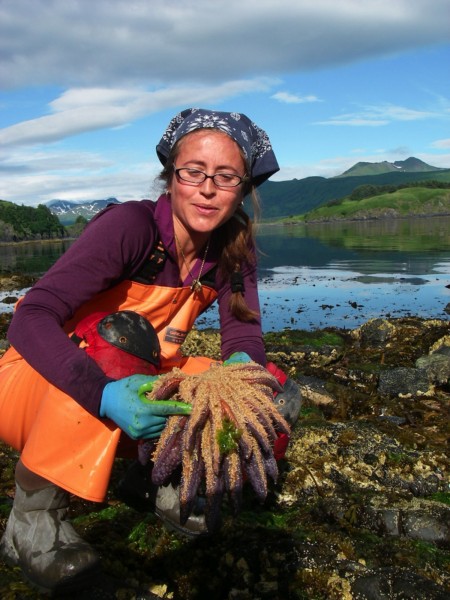Scientists receive $1.7 million grant to study Pacific walruses
October 9, 2013

907-451-2990
10/9/13
A team led by University of Alaska Fairbanks scientists has been awarded a $1.7 million National Science Foundation grant to study long-term and ongoing population trends in the Pacific walrus.
The project brings together scientists from the U.S. and Canada with expertise in genetics, archeology, chemistry, ecology and ethnohistory to study the marine mammals, whose sea ice habitat has been markedly receding in recent years. Pacific walruses are critical to subsistence in many coastal villages.
“Changes in arctic waters and sea ice coverage over the past few years appear to have contributed to a decrease in walrus population,” said lead researcher Nicole Misarti of the UAF Institute of Northern Engineering. “This study combines diverse expertise and resources from across Alaska and beyond and will give us a far more expansive and detailed picture of the Pacific walrus and its adaptability than has been possible up until now.”
Among those resources are thousands of walrus samples housed at the University of Alaska Museum of the North. Link Olson, curator of the museum’s mammal collection, likens the collection to a vast library. The books are the specimens themselves—some thousands of years old—collected over the past century by naturalists, archaeologists, biologists and subsistence hunters. Olson, together with Tara Fulton, an expert in ancient DNA from the University of Alberta, will use DNA-sequencing technology to extract genetic information from specimens going back two millennia, providing insight into the overall genetic health of the species.
Misarti and Lara Horstmann-Dehn, an assistant professor in the UAF School of Fisheries and Ocean Sciences, will obtain stable isotope, trace element and hormone data from the same specimens to look for shifts in feeding ecology, foraging location or stress responses. Anne Jensen, an archaeologist and senior scientist at UIC Science LLC in Barrow, will collect additional walrus samples from archaeological repositories and help the team interpret their findings in a broader cultural and historical context, as will the numerous Alaska Native organizations participating in the study.
In addition, a translator will search through hundreds of interviews archived at the UAF Rasmuson Library that contain traditional ecological knowledge of Pacific walruses. Even high school students will have a chance to participate in the project through the Rural Alaska Honors Institute program at UAF and in Barrow.
“A project of this scope would not be possible without the incredible support of researchers, subsistence hunters, and university, state and local entities such as the Eskimo Walrus Commission, all which share the goal of ensuring the sustainability of both Native subsistence lifestyles and healthy walrus populations,” Misarti said.
ADDITIONAL CONTACT: Theresa Bakker, UA Museum of the North, 907-474-6941, tabakker@alaska.edu. Sharice Walker, School of Fisheries and Ocean Sciences, 907-474-7208, skwalker@alaska.edu.
ON THE WEB: http://ine.uaf.edu/werc/people/nicole-misarti/
RH/10-9-13/075-14


